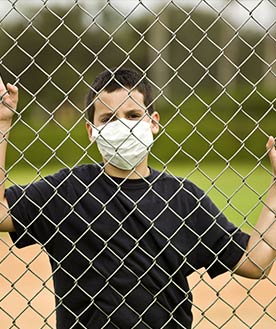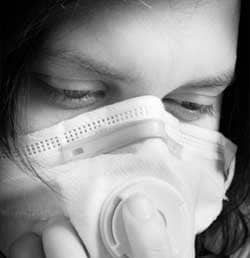Glossary
Here’s the A-Z of all the pollution-related terms that you need to know of:
Air Pollution
Air is made up of a number of gases, mostly nitrogen and oxygen and, in smaller amounts, water vapour, carbon dioxide and argon and other trace gases. Air pollution occurs when harmful chemicals and particles are emitted to the air – due to human activity or natural forces – at a concentration that interferes with human health or welfare or that harms the environment in other ways.
Air quality
A measure of the level of pollution in the air.
Carbon count
A measure of the amount of carbon dioxide you produce through your lifestyle every day, for example through driving or using electrical appliances and lighting
Carbon credit
A unit of carbon dioxide bought to reduce greenhouse gas emissions. See carbon offset.
Carbon emissions
In the context of climate change, carbon dioxide released when substances, especially oil, gas, and coal, are burned by vehicles and planes, by factories and by homes.
Carbon footprint
A measure of the impact our activities have on the environment, especially climate change, often reported as the units of tonnes (or kg) of carbon dioxide each of us produces over a given period of time.
Carbon neutral
A situation that arises when the amount of carbon dioxide released into the air equals the amount of carbon dioxide removed from the air, for example by planting trees, or the amount saved by using renewable energy sources to produce the same amount of energy. See also renewable energy.
CFCs
Short for ‘chloroflurocarbons’, which are chemicals used in manufacturing and, in the past, in aerosol cans and refrigerators, which can damage the ozone layer.
Composting
The process of deliberately allowing food, garden and other suitable organic wastes to break down naturally over time to produce compost.
Cryptosporidium
A tiny parasite that can infect people if it is present in drinking water.
Dioxins
Highly toxic chemicals that can be formed in small amounts from forest fires or volcanoes but more often are produced unintentionally from industrial activities and from incinerating waste and burning fossil fuels.
Draught proofing
A way to stop heat from escaping a home, for example by sealing window frames and using draught excluders under doors.
Emissions
In the context of the atmosphere, gases or particles released into the air that can contribute to global warming or poor air quality.
Fossil fuels
Fuels – such as coal, gas, peat and oil – that are formed in the ground over a long time from dead plants and animals and are used up once they are burned for energy.
Global warming
The gradual increase in temperature of the Earth’s surface caused by human activities that cause high levels of carbon dioxide and other gases to be released into the air
Green design
A design, usually of a building, that includes environmentally-friendly features such as solar panels, skylights or recycled building materials.
Greenhouse effect
The warming of the Earth’s atmosphere caused by increasing levels of gases, such as water vapour and carbon dioxide. These gases absorb radiation emitted naturally from the ground, so slowing down the loss of energy from Earth. The greenhouse effect has always existed; without it, Earth would be too cold for plants, animals and people to survive. But because of the increase in greenhouse gas emissions in recent years, the greenhouse effect is a lot stronger, so leading to global warming. See also global warming, greenhouse gases and radiation.
Landfill
A site that is specially designed to dispose of waste and operates with a licence granted by the Environmental Protection Agency (EPA). The EPA reviews licences and, with local authorities, monitors landfills around the country for emissions.
Noxious gases
Poisonous gases that can harm people and the environment. Some gases have a strong smell, for example sulphur dioxide and methane, while others, such as carbon monoxide, do not have any smell at all.
Ozone layer
The thin protective layer of gas 10 to 50km above the Earth that acts as a filter for ultraviolet (UV) radiation from the sun. High UV levels can lead to skin cancer and cataracts and affect the growth of plants.
Particulate matter
Fine solid or liquid particles that pollute the air and are added to the atmosphere by natural and man-made processes at the Earth’s surface. Examples of particulate matter include dust, smoke, soot, pollen and soil particles.
Radon
A common radioactive gas emitted from ordinary soils and rock. Radon has no smell, taste or colour and can seep into homes, building up to dangerous levels if there is not enough ventilation. Being exposed to high levels of radon gas over a long period of time increases the risk of developing lung cancer.
Reforestation
The process of planting trees in forest lands to replace those that have been cut down.
Sewage
Liquid wastes from communities, which may be a mixture of domestic effluent from homes and liquid waste from industry.
Smog
Air pollution consisting of smoke and fog, which occurs in large urban and industrial areas and is mainly caused by the action of sunlight on burned fuels, mostly from car exhausts. Smog can cause eye irritations and breathing problems and damage plant life.
Sustainable development
Development using land or energy sources in a way that meets the needs of people today without reducing the ability of future generations to meet their own needs.
Waste management
The management of waste collection, handling, processing, storage and transport from where it is produced to where it is finally disposed. See waste prevention.
Waste prevention
An aspect of waste management that involves reducing the amount of waste we produce and minimising the potential harm to human health or the environment from packaging or ingredients in products.
Zero emissions
An engine, motor or other energy source that does not produce any gas or release any harmful gases directly into the environment.
Acid Rain
Rain that is especially acidic (pH is less than 5.2). Principal components of acid rain typically include nitric and sulfuric acid. These may be formed by the combination of nitrogen and sulfur oxides with water vapor in the atmosphere.
Asbestos
A mineral fiber that can pollute air or water and cause cancer or asbestosis when inhaled.
Baghouse
An air pollution control device that traps particulates by forcing gas streams through large permeable bags usually made of glass fibers.



